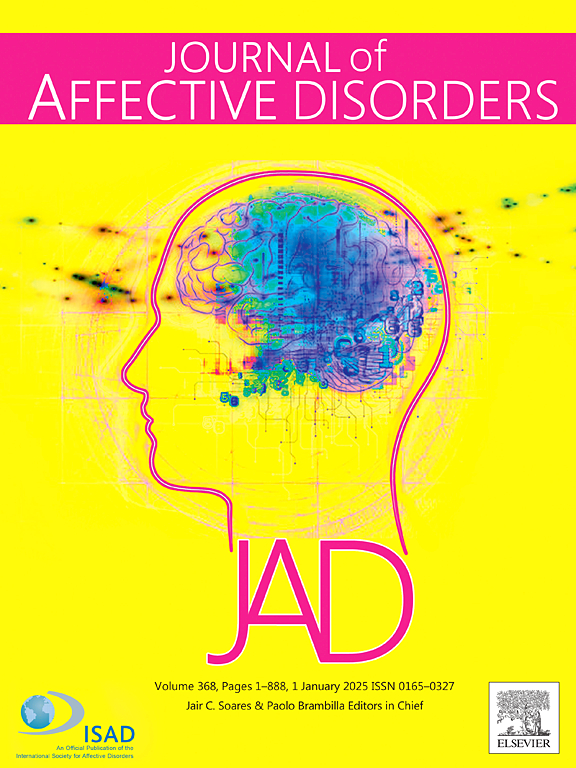Mediation analysis of anxiety and depression between alexithymia and frequency of headache attacks and impact on suicidal ideation in primary headache
IF 4.9
2区 医学
Q1 CLINICAL NEUROLOGY
引用次数: 0
Abstract
Objective
Considering the constellation of psychopathological symptoms that characterize primary headaches, the present study aimed to describe the relationship between specific psychopathological symptoms (i.e., anxiety, depression, and suicidal ideation), psychological variables (i.e., alexithymia), and their impact on headache frequency.
Methods
Socio-demographic data (gender, age, occupation, marital status, and educational level) and psychological variables (alexithymia, anxiety, depression, and suicidal ideation) of 70 people with headache (the experimental group was composed of 33 with migraine, 23 with tension-type headache, and 14 with mixed tension migraine) were compared to those of 62 age-matched control subjects. First, participants underwent a neurological examination to make the diagnosis and define the frequency of headache attacks in a month. Consequently, all participants completed the Toronto Alexithymia Scale-20, the Symptom Questionnaire, and the Symptom Checklist 90-Revised.
Results
The Headache group reported significantly higher levels of alexithymia, anxiety, depression, and suicidal ideation compared to controls. The mediation analysis, conducted within the patient group alone, proved that anxiety and depression fully mediated the relationship between alexithymia and monthly headache frequency, even controlling for gender and age. Additionally, the frequency of headache attacks predicted suicidal ideation.
Discussions
Our results highlight the importance of conducting a psychological evaluation in headache patients because some factors can increase the clinical manifestations of the disease.
原发性头痛患者述情障碍与头痛发作频率及自杀意念影响的焦虑、抑郁中介分析
目的考虑到原发性头痛的一系列精神病理症状,本研究旨在描述特定精神病理症状(如焦虑、抑郁和自杀意念)、心理变量(如述情障碍)及其对头痛频率的影响之间的关系。方法将70例头痛患者(实验组偏头痛患者33例,紧张性头痛患者23例,混合型紧张性偏头痛患者14例)的社会人口学资料(性别、年龄、职业、婚姻状况、文化程度)和心理变量(述情障碍、焦虑、抑郁、自杀意念)与62例年龄匹配的对照组进行比较。首先,参与者接受了神经系统检查,以做出诊断并确定一个月内头痛发作的频率。因此,所有参与者完成多伦多述情障碍量表-20、症状问卷和症状检查表90-修订版。结果与对照组相比,头痛组报告的述情障碍、焦虑、抑郁和自杀意念水平明显更高。仅在患者组内进行的中介分析证明,焦虑和抑郁完全介导述情障碍与每月头痛频率之间的关系,甚至控制了性别和年龄。此外,头痛发作的频率可以预测自杀意念。我们的研究结果强调了对头痛患者进行心理评估的重要性,因为一些因素会增加该病的临床表现。
本文章由计算机程序翻译,如有差异,请以英文原文为准。
求助全文
约1分钟内获得全文
求助全文
来源期刊

Journal of affective disorders
医学-精神病学
CiteScore
10.90
自引率
6.10%
发文量
1319
审稿时长
9.3 weeks
期刊介绍:
The Journal of Affective Disorders publishes papers concerned with affective disorders in the widest sense: depression, mania, mood spectrum, emotions and personality, anxiety and stress. It is interdisciplinary and aims to bring together different approaches for a diverse readership. Top quality papers will be accepted dealing with any aspect of affective disorders, including neuroimaging, cognitive neurosciences, genetics, molecular biology, experimental and clinical neurosciences, pharmacology, neuroimmunoendocrinology, intervention and treatment trials.
 求助内容:
求助内容: 应助结果提醒方式:
应助结果提醒方式:


